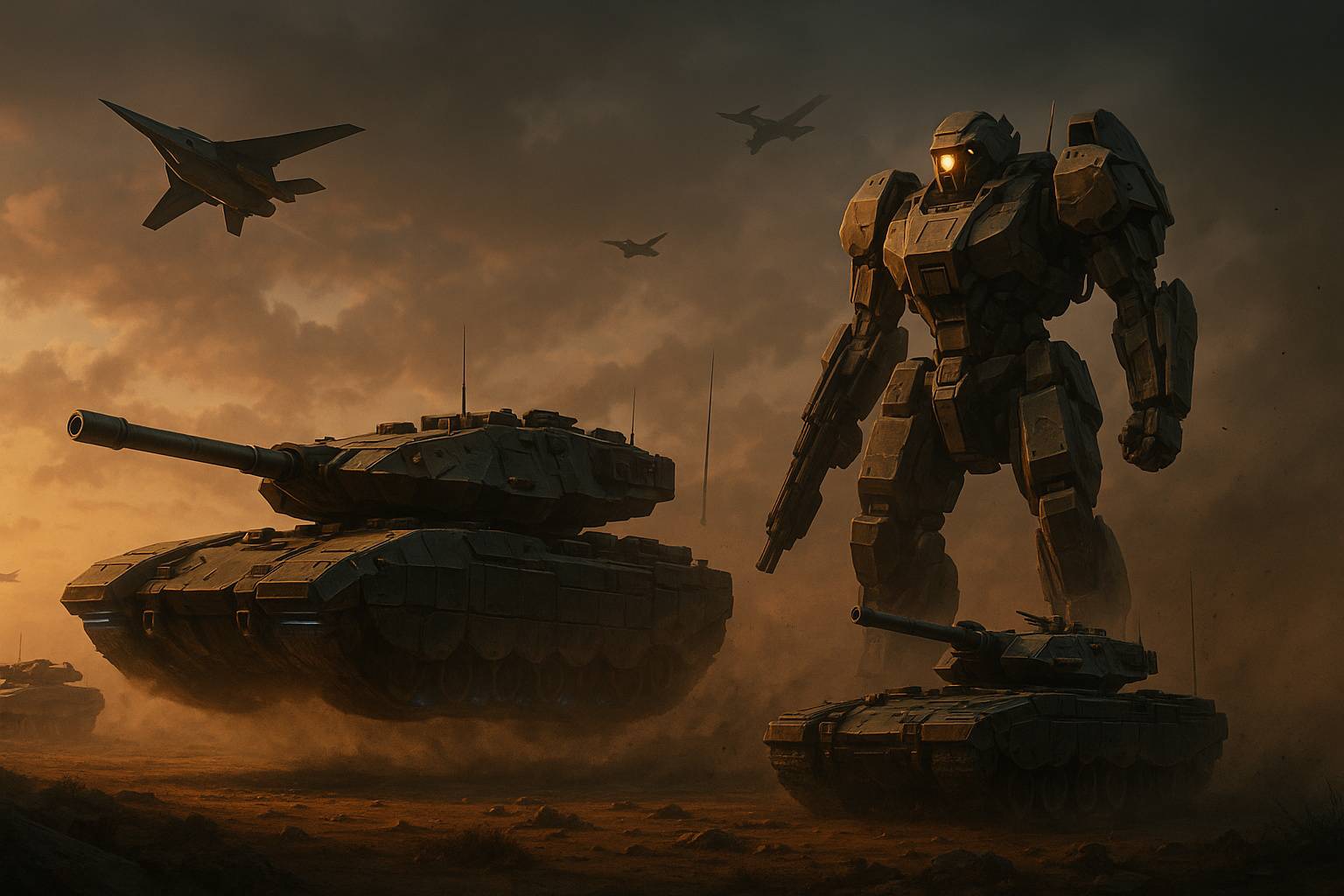Science fiction often sparks real-world innovation. Technologies once considered impossible—like drones or stealth jets—are now military staples. With AI-driven engineering, advanced materials research, and new propulsion methods, concepts from sci-fi are moving closer to reality. Below are 15 futuristic military vehicles that could one day emerge, bridging the gap between imagination and battlefield utility with surprising speed and capability.
1. Hovertanks (Inspired by Star Wars & Halo)
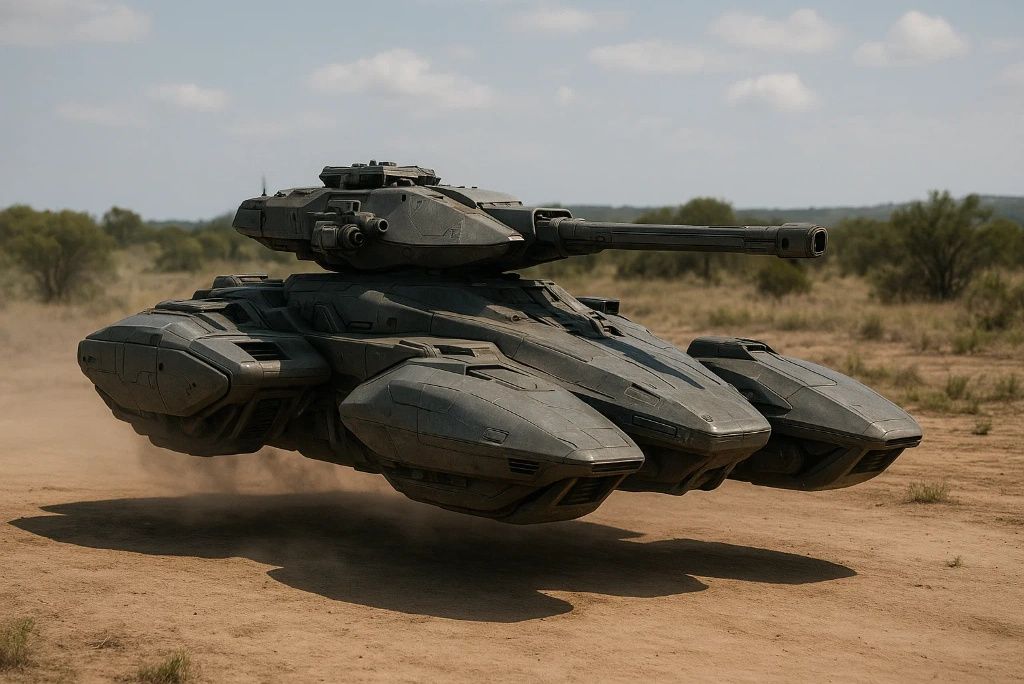
Hovertanks could revolutionize warfare by gliding over rough terrain using advanced repulsorlift or maglev systems. Unlike tracked vehicles, these tanks would bypass terrain limits, offering unmatched speed and maneuverability.
AI-powered energy management could make them efficient, while breakthroughs in superconductors might drive feasibility. Today’s hovercraft offers a small glimpse of what combat hover tanks could achieve in future battlefield scenarios. With compact energy systems, their deployment becomes increasingly plausible. Source: Popular Mechanics.
2. Mech Walkers (Inspired by Gundam & Pacific Rim)
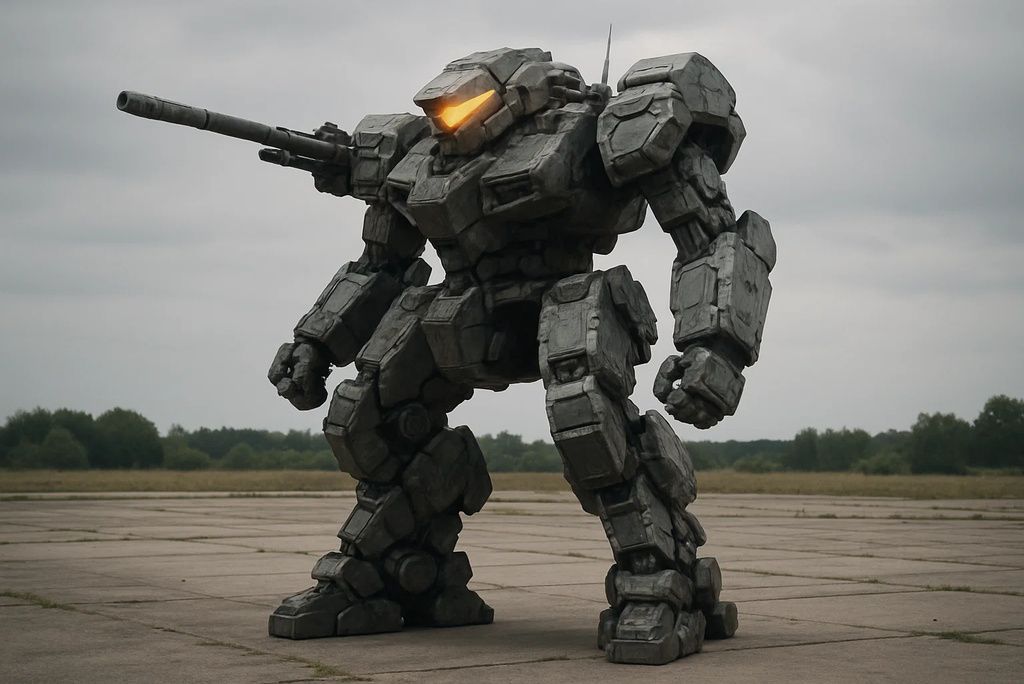
Giant mech walkers could blend the firepower of tanks with the flexibility of robotics. While towering mechs remain impractical, smaller exosuit-like walkers could fill tactical combat roles. DARPA’s powered exoskeleton research has already paved the way, with AI stabilization making walking platforms feasible.
Advanced composites and compact energy systems could enable versatile mech units for urban combat or specialized missions. Such walkers could reshape ground operations dramatically in high-stakes environments. Source: DARPA.
3. Railgun Tanks (Inspired by The Expanse)
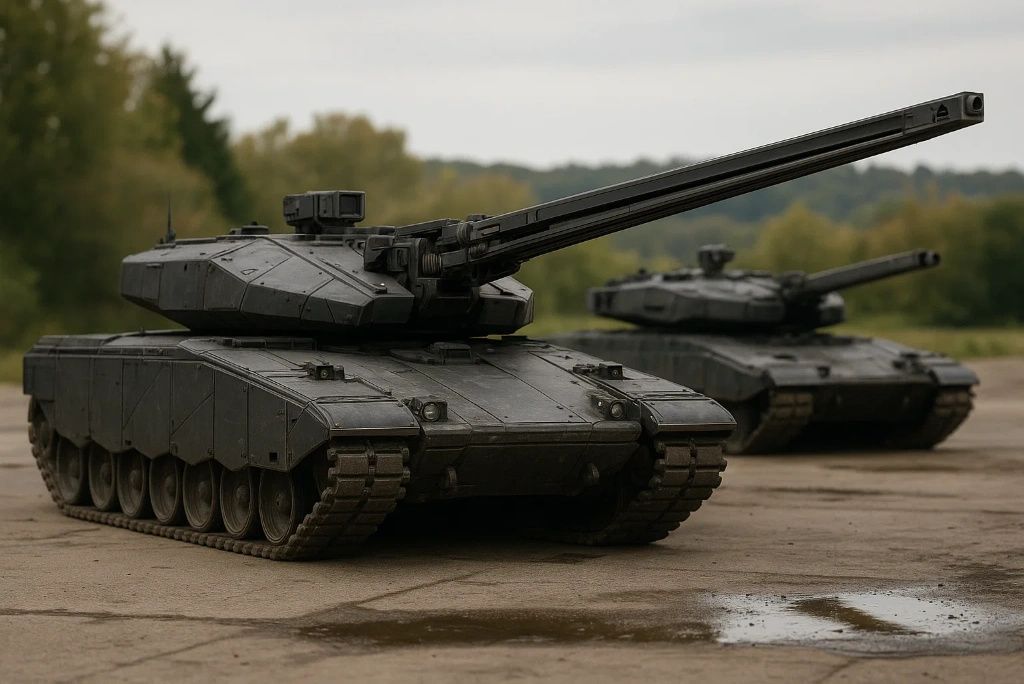
Railguns use electromagnetic forces to launch hypersonic projectiles, eliminating the need for explosives. Integrating them into tanks would provide unmatched range and power. While naval railguns exist, downsizing for ground vehicles requires AI-enhanced cooling, structural redesign, and compact energy solutions.
Such tanks could strike targets well beyond today’s artillery limits, reshaping armored warfare and increasing safety for deployed crews. Their battlefield dominance potential makes them an attractive military goal. Source: U.S. Navy Research.
4. Stealth Drones (Inspired by Terminator & Oblivion)
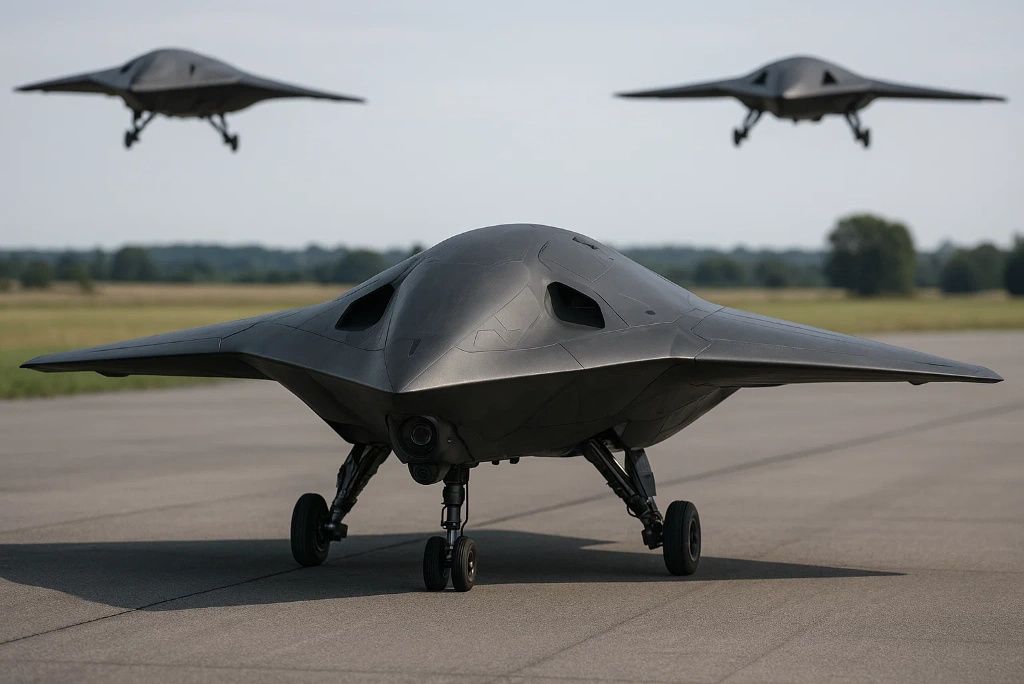
Future stealth drones could autonomously adapt routes, jam radar, and coordinate swarm attacks. Unlike today’s UAVs, AI-driven models would learn and respond in real time, ensuring survivability in contested airspace. Solar-powered wings could allow long-term missions without constant refueling.
These drones could become vital for reconnaissance, strikes, and electronic warfare with minimal human oversight. Their adaptability and stealth make them indispensable assets in modern conflicts. Source: The Drive.
5. Subterranean Assault Vehicles (Inspired by G.I. Joe & Total Recall)
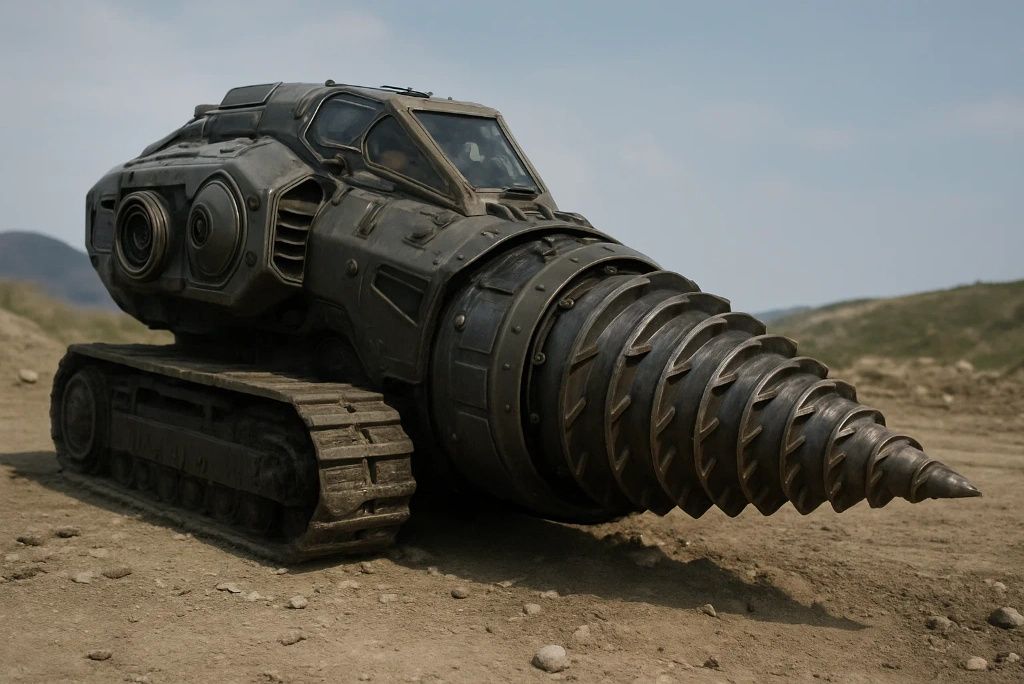
Underground assault vehicles could bypass surface defenses by tunneling beneath enemy lines. Advanced drilling tech and AI navigation would help traverse complex geologies safely. DARPA’s Subterranean Operations Challenge already explores robotic underground systems, proving serious military interest.
Such vehicles could enable covert infiltration, rescue operations, or surprise assaults in heavily fortified zones. In addition, they could also revolutionize disaster relief in hostile or inaccessible areas. Source: DARPA.
6. Amphibious Walking Tanks (Inspired by Ghost in the Shell)
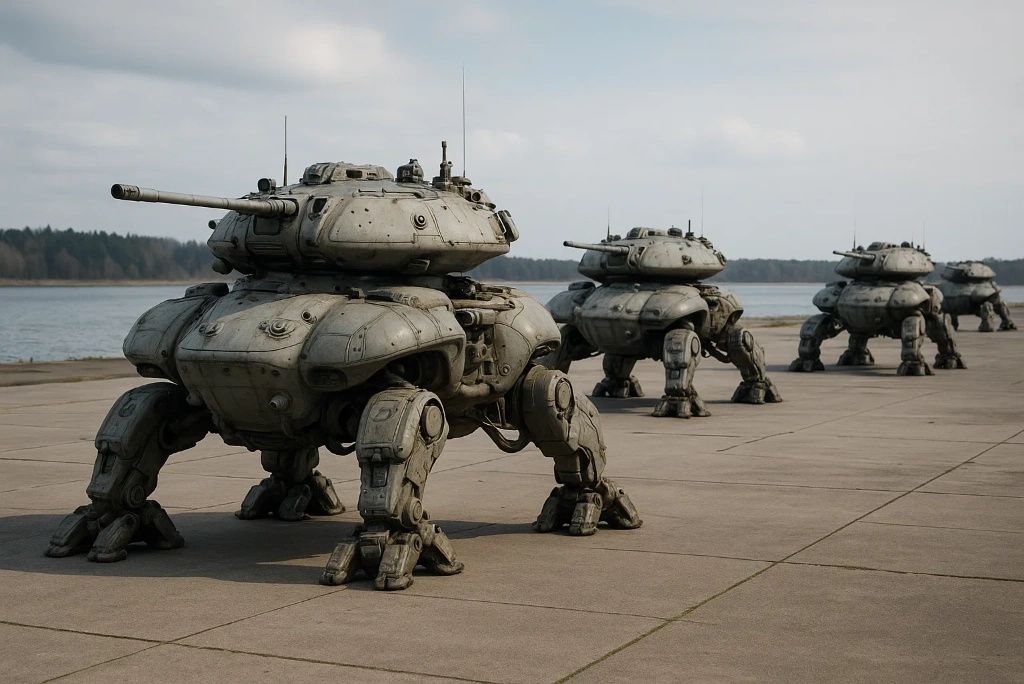
Walking amphibious tanks could dominate coastal and marshy battlefields. Using articulated, spider-like legs, they’d navigate environments that challenge traditional tracked vehicles. AI-guided hydraulics and bio-inspired robotics would enhance stability, while corrosion-resistant materials ensure durability in harsh conditions.
These tanks could support amphibious landings or coastal defense, blending heavy armor with adaptable mobility. They would serve as versatile platforms for multi-environment operations. Source: National Defense Magazine.
7. Orbital Drop Pods (Inspired by Halo & Starship Troopers)
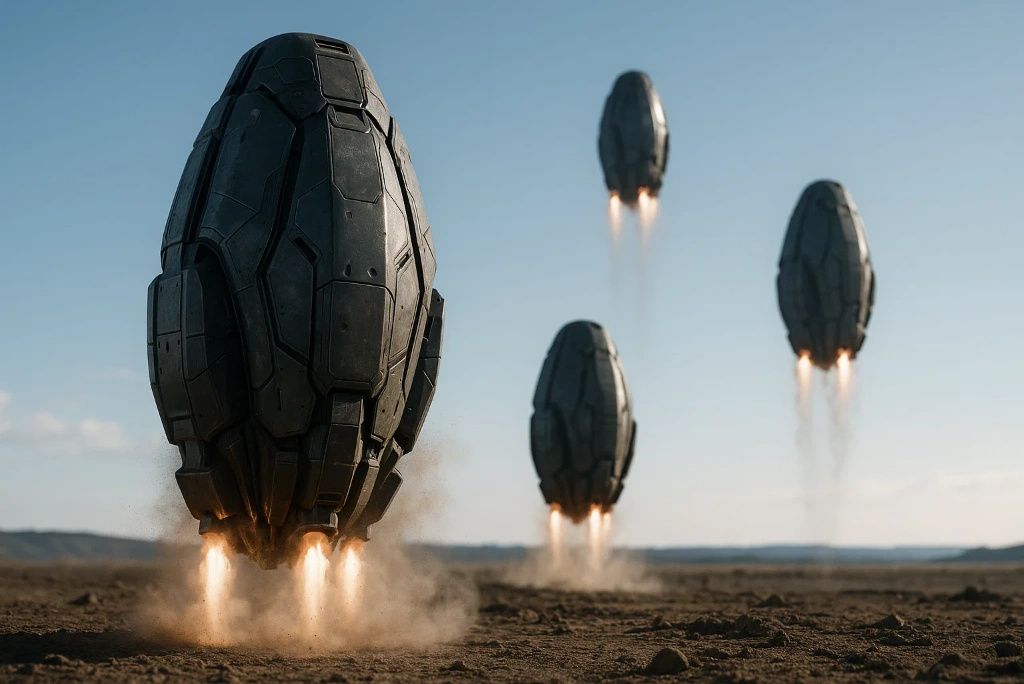
Orbital drop pods could deliver troops or equipment directly from orbit to any battlefield. AI-controlled reentry would ensure safe, precise landings in hostile regions. With companies like SpaceX advancing reusable spacecraft, this concept inches closer to reality.
Militaries could use these for rapid-response missions or aid in hostile regions, bypassing conventional deployment methods entirely. They might also offer unmatched speed for global crisis responses. Source: Space.com.
8. AI-Piloted Combat Aircraft (Inspired by Stealth & Battlestar Galactica)
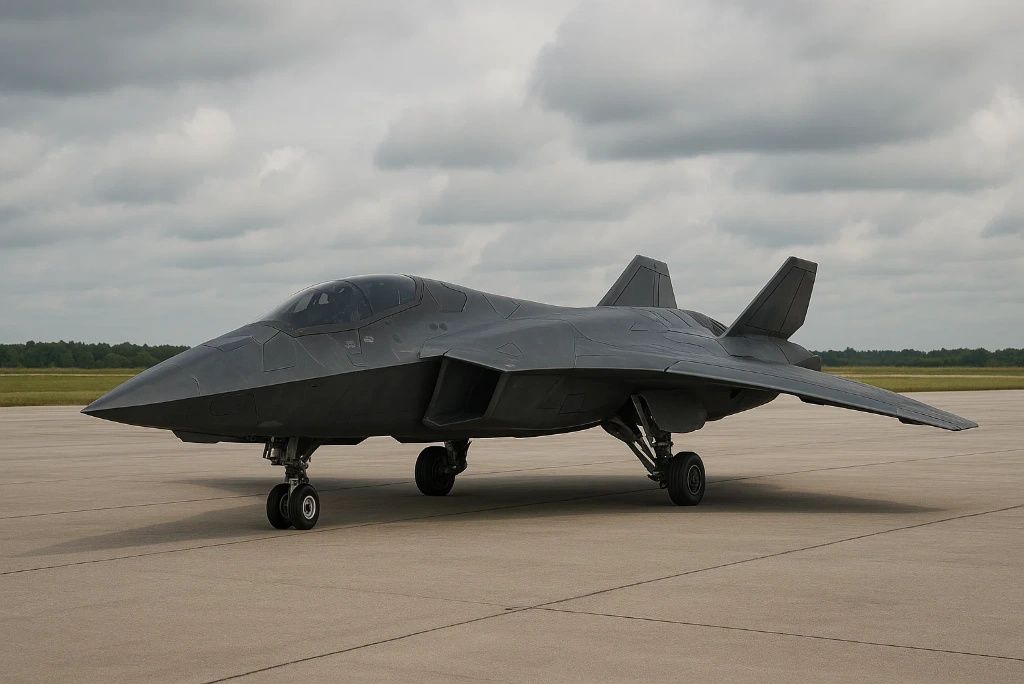
AI-driven fighters could outperform humans in speed, precision, and endurance. Programs like Skyborg already test AI co-pilots for combat roles, showing early feasibility. Fully autonomous jets could coordinate swarm tactics, execute complex maneuvers, and adapt instantly to threats. Such fighters would reduce pilot risk while ensuring air dominance in high-stakes operations. Their ability to self-learn makes them even more formidable. Source: Air Force Research Laboratory.
9. Energy-Shielded Vehicles (Inspired by Dune & Star Trek)
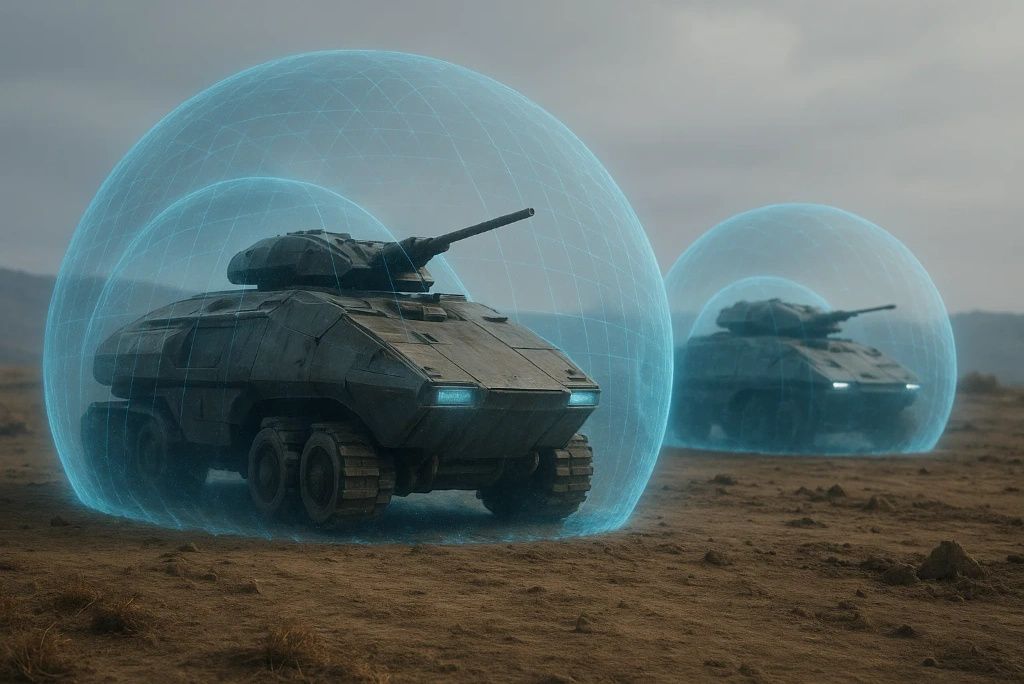
Energy shields could deflect projectiles using electromagnetic or plasma fields. AI would dynamically adjust shield power, conserving energy while maintaining necessary protection levels. While fully functional shields remain theoretical, directed-energy research shows encouraging progress.
Early applications may emerge as supplemental armor, improving survivability against missiles and small-arms fire. This would give armored units critical advantages against evolving battlefield threats. Source: IEEE Spectrum.
10. Underwater Combat Mechs (Inspired by Pacific Rim & Aquaman)
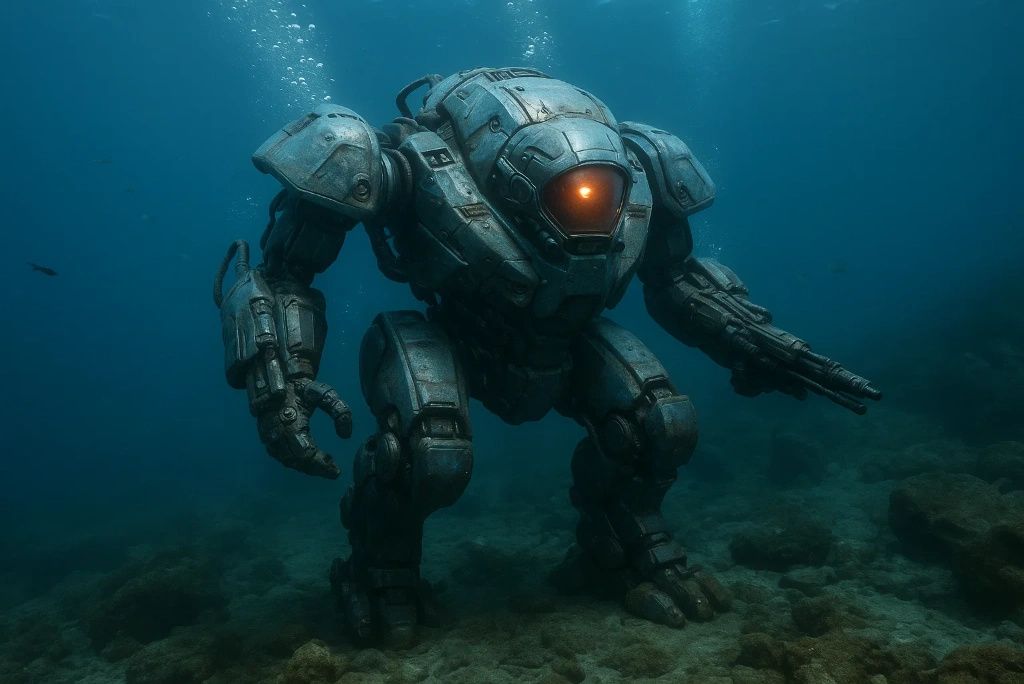
These mechs could patrol ocean depths, sabotage enemy fleets, or secure vital maritime zones. Combining submarine stealth with humanoid flexibility, they’d use AI to manage buoyancy, propulsion, and deep-sea combat. Bio-mimetic robotics inspired by marine life already exists, hinting at potential scaled-up mech-like platforms for underwater warfare. They could secure contested waters more efficiently than traditional submarines. Source: Naval Institute News.
11. Hyper-Adaptive Tanks (Inspired by Transformers & Matrix Revolutions)
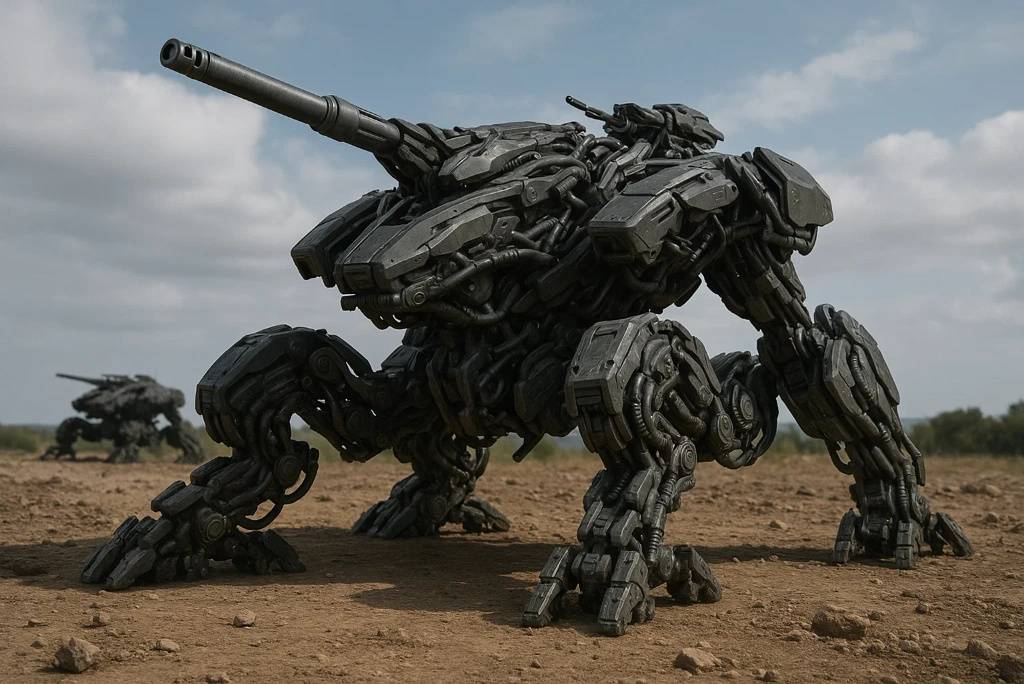
Hyper-adaptive tanks could morph between tracked, wheeled, and walking modes based on terrain needs. Shape-memory alloys and modular robotics make this innovation feasible. AI systems would control transformations seamlessly, enabling these tanks to operate across deserts, cities, or mountains without switching vehicles. Early modular robotic platforms are already testing this groundbreaking concept. Their dynamic adaptability could drastically reduce logistical challenges for armed forces. Source: MIT Technology Review.
12. Supersonic Gunships (Inspired by Avatar & Edge of Tomorrow)
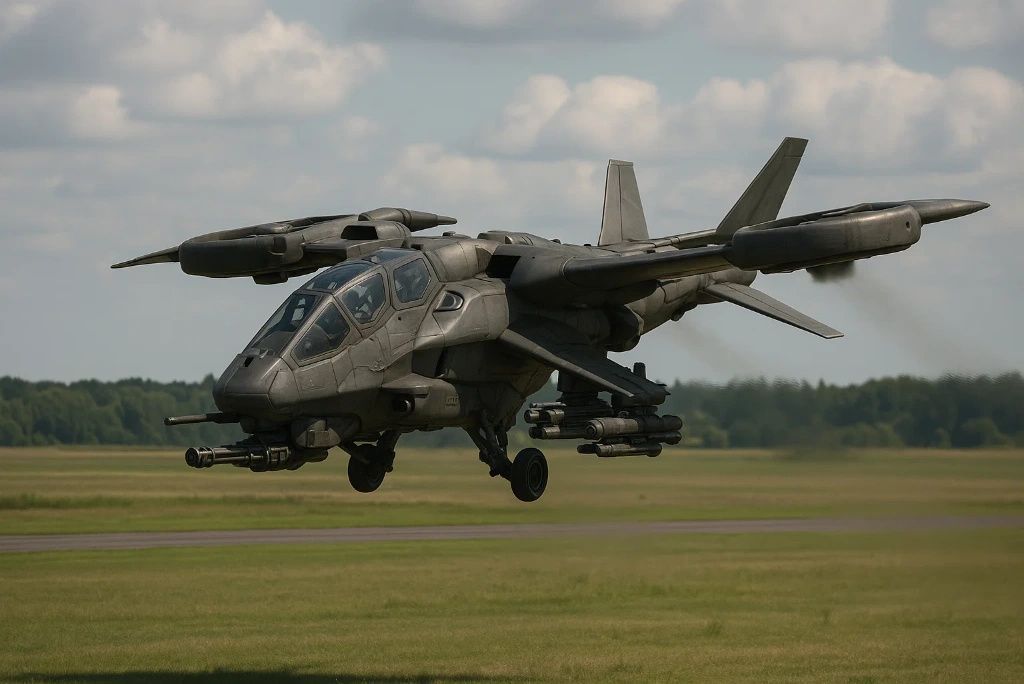
Supersonic gunships could merge helicopter agility with jet-level speed. Using tilt-rotor or hybrid engines, these aircraft could perform vertical takeoffs before switching to high-speed flight. AI would optimize transitions, combat maneuvers, and targeting in complex environments. Prototypes like the V-280 Valor prove this concept’s potential, promising highly versatile air assault platforms. They could reshape rapid-response military aviation strategies dramatically. Source: Aviation Week.
13. Solar-Powered Combat Vehicles (Inspired by Interstellar & Elysium)
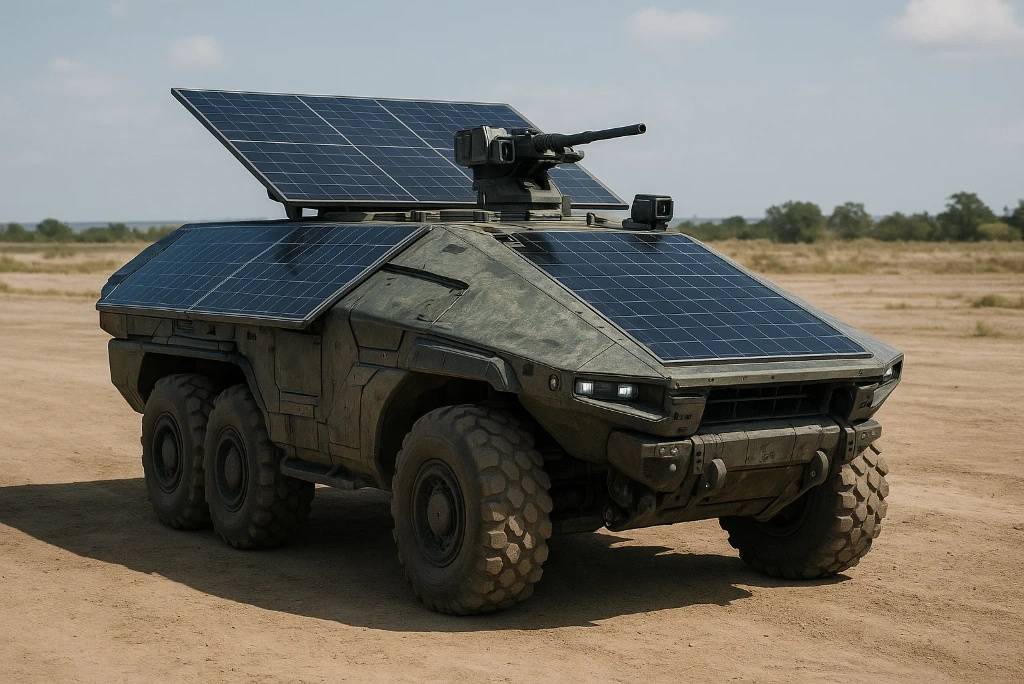
Solar-powered vehicles could reduce dependence on supply lines, sustaining long operations in remote areas. Using advanced photovoltaic systems and AI energy optimization, these platforms could function longer with fewer refuels. UAVs like Airbus’ Zephyr prove solar endurance is possible, and scaling this for combat ground vehicles could enhance sustainability in future conflicts. Such vehicles could redefine logistics for extended missions. Source: Scientific American.
14. Swarm-Controlled Drone Carriers (Inspired by Ender’s Game & Edge of Tomorrow)
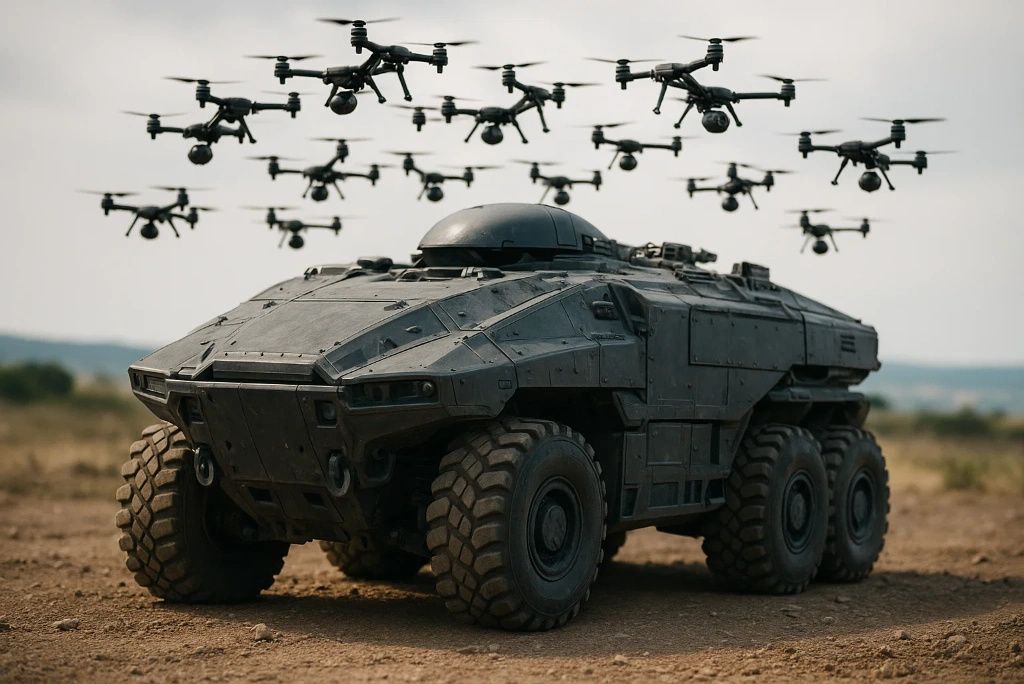
Mobile carriers deploying swarms of autonomous drones could overwhelm defenses through coordinated attacks. AI would control swarm behavior, managing surveillance, strikes, or electronic warfare. Projects like the Gremlins program show a serious investment in swarm drone technology. These carriers could redefine battlefield strategy by replacing single high-value assets with agile, expendable units. Their use could revolutionize offensive and defensive operations simultaneously. Source: Defense News.
15. AI-Integrated Battlefield Command Vehicles (Inspired by Minority Report)

Command vehicles with AI could process massive data streams, fusing satellite feeds, drone intelligence, and ground reports seamlessly. These systems would create real-time tactical plans, enhancing decision-making speed and battlefield accuracy. Efforts like JADC2 already aim to unify multi-domain data. Such vehicles could serve as mobile nerve centers for complex military operations. Their real-time analysis could decisively change combat outcomes. Source: U.S. Department of Defense.

